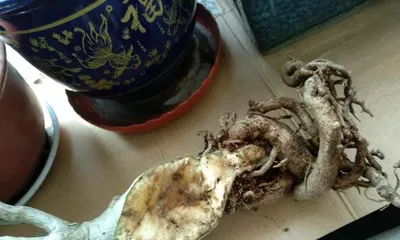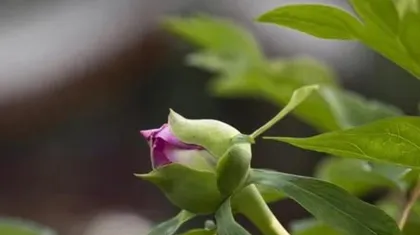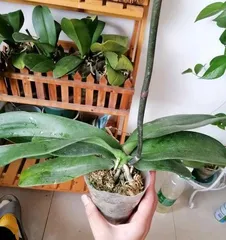Peony is one of the important plants in traditional Chinese gardens. However, peonies are prone to root rot during their growth process, which brings difficulties to maintenance. How to effectively solve the problem of peony root rot has become an important topic in current garden conservation and restoration.

I. Understanding the Causes of Peony Root Rot
Peony root rot is caused by root decay due to reasons such as overly moist soil, poor drainage, and lack of oxygen. At the same time, excessive fertilization or the use of fertilizers with high salt content is also one of the causes of peony root rot.
II. Water Correctly to Avoid Overly Moist Soil
For peonies, it is advisable to water with a small amount many times. Each watering should make the soil slightly moist. When the soil is too wet, promptly add materials with good air permeability such as pine needles or hardwood chips to enhance the soil's aeration.

III. Maintain Soil Permeability to Prevent Oxygen Deficiency
Peony growth requires sufficient oxygen; soil hypoxia can lead to root rot. During the planting process, a loose and breathable substrate should be selected, and the soil should be loosened in a timely manner during daily maintenance.
IV. Prevent Over-fertilization
Moderate fertilization can provide sufficient nutrients for peonies, but excessive fertilization will lead to excessively high soil fertility, thus increasing the burden on the peony's roots and accelerating the occurrence of root rot. During the growth of peonies, attention should be paid to controlling the amount and frequency of fertilization.
V. Choose Fertilizers Rationally
When purchasing chemical fertilizers, fertilizers with low salt content should be chosen to avoid excessive burden on the peony. At the same time, the amount and frequency of use should be controlled when using chemical fertilizers to avoid problems such as root rot.

VI. Prune Rotten Roots to Promote New Root Growth
Once root rot is found on a peony, timely pruning measures should be taken to remove the rotten parts. Applying a rooting agent to the pruned peony can promote the growth of new roots and restore the vitality of the peony.
VII. Apply Biological Agents to Improve Soil Quality
Biological agents are an effective means of improving soil quality. Spraying biological agents can increase the number and vitality of soil microorganisms, promoting the healthy growth of peonies.
VIII. Increase Light Intensity to Promote Photosynthesis
Peonies have high requirements for light. During the maintenance process, attention should be paid to increasing the light intensity, creating good lighting conditions, promoting peony photosynthesis, and improving the plant's nutrient absorption capacity.
IX. Control Temperature to Avoid Excessive Cold or Heat
Peonies prefer a warm and humid climate. During the maintenance process, attention should be paid to controlling the indoor temperature to avoid excessive cold or heat. Especially in winter, it is important to maintain a suitable temperature and humidity.
X. Increase Air Humidity to Prevent Leaf Withering
The leaves of peonies are relatively fragile and tend to wither. During the maintenance process, attention should be paid to increasing air humidity. Methods such as timed spraying or using a humidifier can be used to maintain the moisture of the leaves.
XI. Avoid Mechanical Damage and Protect the Plant
The flowers of peonies are very delicate and are easily damaged by mechanical means during transplantation or pruning. When performing various operations on peonies, handle them with care to avoid causing damage to the plant.
XII. Pay Attention to Pest and Disease Control
During the growth process, peonies are susceptible to pests and diseases such as aphids and mites. During maintenance, attention should be paid to the prevention and control of pests and diseases, using green and environmentally friendly control methods to protect the vitality of the peonies.
XIII. Fertilize Rationally to Increase Nutrition
Moderate fertilization can provide sufficient nutrients for peonies, but it is necessary to choose high-quality fertilizers with suitable content and adopt appropriate fertilization methods to ensure balanced nutrition and increase the vitality of the peony.
XIV. Clean Up Fallen Leaves and Dead Branches in a Timely Manner
During the growth process, peonies often shed some dead leaves and branches. These dead branches and fallen leaves can easily breed bacteria and cause infection of the peony. During the maintenance process, fallen leaves and dead branches should be cleaned up in a timely manner to maintain environmental hygiene.
XV. In summary, scientific maintenance is an effective measure to save peonies from root rot. Through methods such as correct watering, maintaining soil permeability, and rational fertilization, the healthy growth of peonies can be promoted, the occurrence of root rot can be avoided, and the peonies can be restored to vitality.